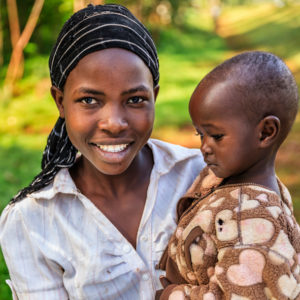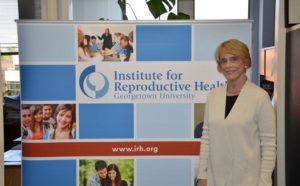Working with faith leaders across communities in Uganda and Rwanda, Georgetown University’s Institute for Reproductive Health has effected change in areas where family planning has proved challenging.
 In many rural communities across Uganda and Rwanda, towns are built around a church or mosque. These institutions lie at the center of civic life, and their leaders are among the most influential members of the community in shaping opinion on issues from education to health. For this reason, pastors, priests, imams, and sheikhs are central partners of Georgetown University’s Institute for Reproductive Health, which aims to improve family planning education in the rural areas of Uganda and Rwanda.
In many rural communities across Uganda and Rwanda, towns are built around a church or mosque. These institutions lie at the center of civic life, and their leaders are among the most influential members of the community in shaping opinion on issues from education to health. For this reason, pastors, priests, imams, and sheikhs are central partners of Georgetown University’s Institute for Reproductive Health, which aims to improve family planning education in the rural areas of Uganda and Rwanda.
Since 2013, the Institute has partnered with four on-the-ground organizations to bridge the spiritual and medical communities. By working with faith leaders, each organization — Caritas Rwanda, Action Familiale Rwandaise (AFR), Uganda Protestant Medical Bureau (UPMB) and CRS & Uganda Catholic Medical Bureau (UCMB) — has significantly increased delivery of family planning techniques.
The project, supported by a $900,000 grant from the John Templeton Foundation, builds on earlier work by the Bill and Melinda Gates Foundation’s A3 Project. With the Foundation funding, Van Enk and co-leader Victoria Jennings have expanded on those earlier efforts by strengthening the organizations’ ability to serve community members, increasing the uptake of family planning techniques, and improving collaboration with national Ministries of Health along with state and local partners.
Finding the Right Message
According to the Institute’s data, faith-based organizations provide up to one-third of the health services in Uganda and Rwanda. These groups have been one of the primary stakeholders in the work of the Institute as it builds coalitions to educate those in rural areas on family planning.
“We found Christian and Muslim leaders were quite open to this idea,” says Van Enk.
But openness is only the first step. In addition, the project requires smart messaging that weaves together scientific education with individual faith commitments and the practices of everyday life. This is important, Van Enk says, since many communities suffer from misconceptions about birth control. “It’s really about taking back that narrative. And it requires that you know your audience.”
Connecting Faith with Modern Healthcare

Victoria Jennings
Knowing the narratives that matter to your audience is also critical. Team members are required to understand how the teachings of the Bible and Quran address the importance of good family stewardship. While both scriptures celebrate children as gifts from God, they also emphasize the importance of providing for the needs of one’s family. Birth spacing is one way for Christian and Muslim parents to care for their children — by reducing newborn mortality rates — and improve maternal health by allowing the mother time to recover from childbirth, thereby reducing maternal mortality rates.
“This attitude that faith-based family planning education doesn’t work is wrong,” says one nun who’s a health facility worker in Uganda. When people sit down to examine their beliefs under the family planning lens, she says, they can see things more clearly — allowing faith leaders and community members to move past old misunderstandings and toward flourishing families.